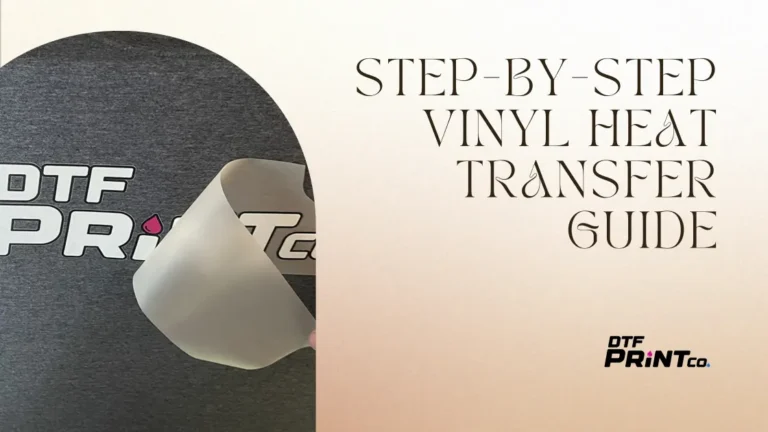
Best Small-Business Design Software for Apparel (2025 Guide)
The best small-business design software for apparel helps you create professional clothing designs, mockups, and patterns without needing advanced skills. These tools make it easy

To keep your apparel printing equipment running smoothly, clean it daily, use quality supplies, and follow a regular maintenance schedule. Proper care prevents breakdowns, improves print quality, and extends machine life—all saving you time and money.
Apparel printing equipment works hard every day—so it’s no surprise that wear, ink buildup, and mechanical issues can slow production. Many print shop owners face sudden downtime simply because small maintenance steps were skipped. The good news? Keeping your machines in top shape is easier than it seems. In this guide, you’ll learn simple, proven ways to clean, maintain, and protect your printing setup—so you can focus on creating great prints, not fixing broken gear. Let’s walk through each step with real examples.
Understanding your printing system is the first step toward keeping your apparel printing business running efficiently. Whether you operate a small studio or a large production floor, knowing how your equipment works will help you identify problems early, reduce waste, and maintain consistent print quality. Every printing method has unique needs, and recognizing those differences ensures you apply the right maintenance approach.
Screen Printing This traditional method uses mesh screens and stencils to push ink through fabric. It’s ideal for bulk printing because of its speed and color vibrancy. Maintenance mainly involves cleaning screens, reclaiming mesh, and preventing ink buildup that can cause blockages. Learn more about best practices from Screen Printing Magazine.
Direct-to-Garment (DTG) Printing DTG printers work like high-end inkjet printers, applying water-based inks directly onto fabric. They require frequent print head cleaning, regular ink circulation, and consistent humidity control to avoid clogs. Because DTG relies on delicate nozzles, preventive maintenance is critical for smooth color application and avoiding downtime.
Heat Transfer Printing Heat transfer methods—such as vinyl and sublimation—use heat and pressure to bond designs onto fabric. Maintenance focuses on the heat press surface, alignment, and ensuring even temperature distribution. Dust or residue can cause inconsistent transfers, so frequent wiping and calibration are vital.
Hybrid and Specialty Printing Modern shops often use hybrid systems, combining screen and digital techniques for advanced effects. Specialty processes like foil printing or puff ink need tailored cleaning routines, especially around curing stations and application areas. These systems demand a balance between digital precision and manual care.
Understanding these methods helps you match your maintenance practices to the equipment type, reducing wear and ensuring consistent output.
Every apparel printing system has critical parts that need regular attention. Neglecting even one can lead to costly breakdowns or poor-quality prints.
| Component | Common Issues | Maintenance Focus |
| Print Heads / Screens | Ink clogging, ghosting | Clean daily, flush lines, inspect for residue |
| Curing Equipment / Dryers | Uneven heat, under-curing | Check temperature consistency, clear lint buildup |
| Heat Press Machines | Misalignment, uneven pressure | Calibrate regularly, clean platen surfaces |
| Ink Delivery System | Air bubbles, leaks | Inspect hoses, test ink flow weekly |
| Substrate Feed Mechanisms | Skewing, misfeeds | Wipe rollers, lubricate tracks, check tension |
| Control Panels & Sensors | Malfunctions, error codes | Keep dust-free, check software updates |
Understanding your equipment’s weak points helps you schedule maintenance strategically rather than reactively. Routine checks also give operators a chance to spot wear early and avoid extended production delays.
Establishing a consistent maintenance schedule is the easiest way to avoid breakdowns and ensure your prints look professional. Routine upkeep can also extend the lifespan of consumables, like screens and platens, saving you money over time.
At the end of each production day, set aside time for basic cleaning tasks. Daily maintenance doesn’t just keep your equipment looking neat—it prevents residue buildup that can damage delicate parts.
For screen printing setups, cleaning screens thoroughly after each run is crucial. Use a screen cleaning solution and reclaim mesh promptly to prevent ink drying in the screen.
Weekly maintenance should go deeper than daily cleaning, addressing hidden components that accumulate residue or friction wear.
Scheduling these weekly tasks minimizes downtime and reduces costly emergency repairs. For further insights on general maintenance schedules, visit Textile World’s guide on equipment care.
Preventive maintenance isn’t just about avoiding breakdowns—it’s about maximizing efficiency and machine longevity. By taking proactive steps each month or quarter, you reduce unexpected failures and maintain optimal output quality.
Even with careful cleaning, mechanical components experience wear over time. Replace belts, seals, and bearings regularly to maintain smooth movement and prevent sudden malfunctions. Keeping a spare parts inventory ensures quick fixes without production delays.
Printing systems increasingly rely on digital controls. Outdated software can cause calibration errors or compatibility issues. Schedule firmware updates every few months and back up system settings. Many manufacturers provide online resources for updates—refer to trusted brands like Epson Support or Brother DTG Maintenance Guides.
Calibration ensures consistent results across different print runs. For screen printers, verify screen tension and registration accuracy. DTG operators should test print heads, platen height, and color alignment. Incorrect calibration leads to waste and uneven results, especially on large orders.
Your printing environment plays a major role in equipment performance. Maintain stable humidity (40–60%) to prevent ink drying or paper warping. Use air filtration to reduce dust buildup inside sensitive components. A clean, climate-controlled room can double the lifespan of electronics and print heads.
Preventive maintenance reduces reactive fixes, improves throughput, and keeps quality consistent—all essential factors in maintaining customer satisfaction.
Even the best-maintained equipment can face issues from time to time. Knowing how to identify and resolve them quickly keeps your workflow uninterrupted and your clients happy.
This is one of the most common problems in both DTG and screen printing. Ink clogs can result from low humidity, expired ink, or dried residue inside nozzles. To fix it:
Misalignment occurs when screens or print heads are not properly registered. Ghosting appears as faint, duplicate images slightly offset from the main print. Common causes include worn tensioners or platen misalignment. Recalibrate regularly, verify platen levels, and tighten registration knobs as needed.
Uneven curing causes fading or cracking after washing. Verify that your curing unit or heat press maintains even temperature and pressure. A heat gun or temperature strip can help you measure consistency across the platen. If certain areas remain cooler, clean lint filters and replace faulty heating elements.
Strange noises or erratic movement often signal bearing wear or belt deterioration. Turn off the machine immediately and inspect affected parts. Regular lubrication and part replacement prevent such issues from escalating into major failures.
Proactive troubleshooting saves you hours of lost production time. Keep a detailed maintenance log to track recurring issues and patterns—it helps identify root causes faster and ensures every technician knows the machine’s history.
Selecting the correct supplies and consumables is one of the easiest ways to improve both print quality and machine performance. Cheap or incompatible materials can lead to clogs, poor color saturation, and premature equipment wear. Understanding what to buy—and why—helps you save money and avoid frustrating downtime.
Inks are the lifeblood of apparel printing. Always use manufacturer-approved or high-grade third-party inks compatible with your system. Poor-quality inks often contain impurities that can clog print heads or screens. When choosing inks, consider viscosity, curing requirements, and color fastness.
For screen printing, emulsions and reclaiming chemicals also affect your workflow. Use reliable brands that offer consistent coating and easy reclaiming. Harsh solvents may clean faster but can damage mesh and shorten screen life.
Cleaning agents should be chosen carefully. Avoid strong alcohols or abrasive cleaners that can corrode sensitive components. Use mild, printer-safe solutions specifically formulated for DTG or screen printing machines. For guidance, review professional recommendations from Printing United Alliance.
Keep a ready supply of common replacement parts, such as print heads, dampers, capping stations, and belts. Even minor components like screws or tension springs can halt production if they fail. Building a small parts inventory minimizes downtime and ensures you can perform immediate repairs without waiting for shipments.
Track part replacements in a maintenance log. Record part numbers, installation dates, and source vendors. This helps identify which suppliers consistently deliver reliable components and simplifies future reordering.
Original Equipment Manufacturer (OEM) parts are designed specifically for your printer model and provide guaranteed compatibility. While aftermarket or compatible parts may be cheaper, they can sometimes cause alignment or performance issues. Use trusted third-party suppliers with positive industry reviews and certifications.
A good rule of thumb: for critical systems like print heads and electronics, stick with OEM components. For non-critical items like belts, screws, and frames, reputable third-party options may be cost-effective alternatives.
Choose suppliers who offer technical support and have transparent return policies. Verify that inks, chemicals, and parts are stored and shipped according to manufacturer recommendations, especially temperature-sensitive items. Partnering with local distributors can reduce shipping times and provide faster warranty exchanges.
Building relationships with specialized vendors also gives you access to product updates, training, and bulk discounts—helping your print shop stay competitive.
No matter how diligent your in-house team is, some maintenance tasks are best handled by professionals. Knowing when to bring in a service technician can prevent small issues from turning into major mechanical failures.
If you notice unusual noises, power surges, or repeated error codes, shut down the machine and contact a certified technician immediately. Attempting DIY repairs on electrical or mechanical systems can void warranties and worsen the damage.
For screen printing presses, professional alignment and recalibration may be required after heavy use or equipment relocation. For DTG systems, technicians can perform deep cleaning and replace internal components like ink pumps or capping stations that are difficult to access.
Modern apparel printing machines depend on electronic sensors, motorized rails, and digital control boards. When these systems malfunction, professional diagnosis is essential. Technicians have specialized tools to test voltage output, recalibrate motion paths, and restore system firmware safely.
Attempting to reset electronics without proper knowledge can lead to irreversible data loss or hardware failure. Trusted service partners like M&R Equipment Support and other certified vendors can provide reliable repair programs and warranties.
Proactive scheduling for maintenance downtime ensures your production flow remains consistent. Coordinate service visits during slower business periods or after completing large orders. Regular inspections help prevent surprise failures that could disrupt delivery deadlines.
Keep an updated service calendar that includes previous inspection reports, replaced parts, and next recommended service dates. This organized approach builds trust with your clients, as you can guarantee stable production timelines.
Many equipment providers offer maintenance contracts, which include periodic inspections, discounted parts, and priority service. While these plans have upfront costs, they often save money over time by preventing emergency repairs.
Ad hoc service, on the other hand, might seem cheaper but can lead to higher expenses if repairs are frequent. For print shops operating multiple machines, a service contract offers peace of mind and consistent performance support.
Professional maintenance isn’t an expense—it’s an investment in uptime and quality assurance.
To maximize the life of your apparel printing equipment, combine smart maintenance with good workplace habits. Proper care extends beyond cleaning—it’s about how your team operates, handles, and manages the machines every day.
A tidy workspace keeps dust and lint from contaminating prints and clogging parts. Install air purifiers and dust filters near printing areas. Keep inks, screens, and chemicals sealed when not in use. Organize cables to prevent tripping hazards or accidental disconnections.
Establish daily cleaning routines that include wiping surfaces, vacuuming lint, and maintaining ventilation. Small steps like these prevent buildup that could cause long-term mechanical problems.
Human error is a major cause of printing equipment failure. Make sure every operator receives training on correct machine use, from startup sequences to cleaning protocols. Create a clear operations manual that outlines do’s and don’ts, such as proper loading procedures and safe handling of chemicals.
Encourage staff to report unusual noises, color inconsistencies, or system alerts immediately. Early detection allows you to fix small issues before they become serious.
Keep a detailed maintenance record for every machine in your shop. Include information about cleaning schedules, part replacements, and technician visits. A digital log can help track patterns and predict when components might need replacement.
Regular documentation improves accountability and simplifies warranty claims. It also provides valuable data when considering upgrades or trade-ins.
Maintain a small stock of essential spare parts—especially consumables like filters, belts, and fuses. When something breaks mid-run, having backups on hand can prevent long production delays. Review your inventory quarterly to restock as needed and retire outdated parts.
Having a structured maintenance system keeps your operation efficient, reduces stress, and helps you deliver consistent quality to your clients.
Many print shop owners underestimate the financial value of preventive maintenance. While cleaning and inspections take time, the return on investment (ROI) far outweighs the cost of neglect.
Below is an example comparison of maintenance costs versus repair costs for a small to mid-sized print shop:
| Category | Preventive Maintenance | Emergency Repair |
| Labor Hours per Month | 8–10 hrs | 20–40 hrs |
| Average Cost | $150–$250 | $1,000–$3,000 |
| Production Downtime | Minimal | 2–5 days |
| Impact on Quality | Consistent output | Potential reprints, wasted materials |
By dedicating a few hours each week to cleaning and inspections, you avoid expensive repairs and missed deadlines. Consistency in maintenance directly contributes to steady cash flow and customer satisfaction.
Proper maintenance can extend your equipment’s lifespan by several years. Well-cared-for machines maintain higher resale value and perform more efficiently. Replacing filters, belts, and print heads on schedule keeps your equipment operating close to factory standards, reducing long-term operational costs.
When small issues—like minor leaks or nozzle clogs—are ignored, they can escalate into total system failures. Replacing a damaged print head or circuit board can cost thousands of dollars. Preventive inspections catch these early signs and keep your business running smoothly.
Track performance metrics such as production uptime, ink waste reduction, and energy savings. These figures help you demonstrate the financial impact of maintenance to your team or management. Investing in care isn’t about spending more—it’s about maximizing every print run’s efficiency.
Regular maintenance is the foundation of a successful apparel printing operation. By cleaning daily, scheduling preventive checks, and using high-quality supplies, you’ll enjoy consistent results, longer equipment life, and fewer costly breakdowns.
Establish a maintenance routine that fits your workflow, document every service task, and build relationships with trusted suppliers and technicians. The result? More uptime, smoother production, and a stronger reputation for reliability and quality.
Ready to take your print shop to the next level? Contact your local Apparel Printing Supplies & Maintenance Center to order trusted consumables or schedule expert servicing today.

The best small-business design software for apparel helps you create professional clothing designs, mockups, and patterns without needing advanced skills. These tools make it easy

Step-by-step vinyl heat transfer is simple: cut your design, weed away the extra vinyl, press it with the right heat, and peel. With the right

Choose t-shirt blanks that fit your printing method, fabric needs, and budget. Focus on fabric type (cotton, blends, or polyester), weight, and style. Pick trusted

2023 - 2024 © ALL RIGHTS RESERVED